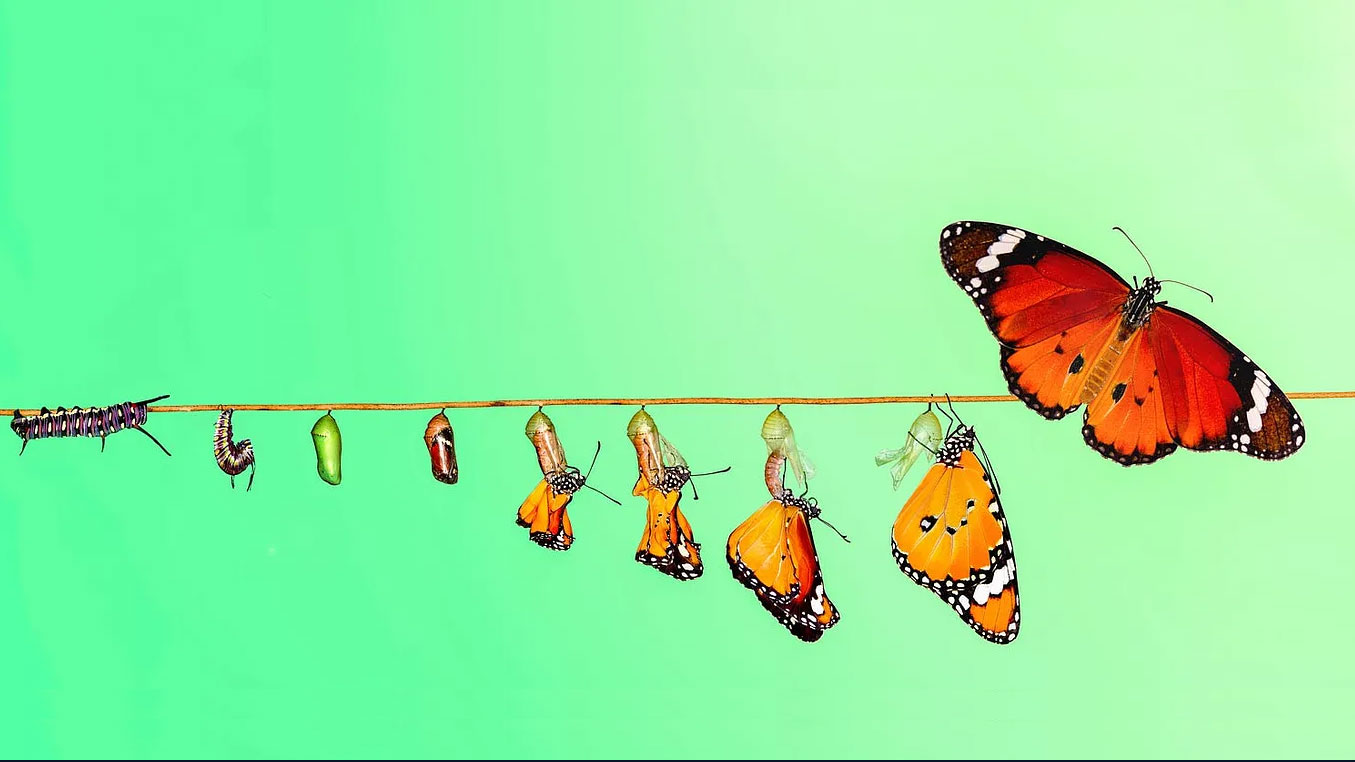Your Personality: Who’s in Charge?

Unpuzzling the Nature and Nurture of Your Personality
Your personality is the core of your self-identity. What do you know about the personality that make you the person you are?
- Do you control it — or does it control you?
- Can you change your personality traits if you don’t like them?
- How did you end up with the personality you have?
- Does your personality influence your political affiliations?
The question is simple: who are you? Try answering these questions:
From what perspective do you describe the you that is you? Should you reference your job, career goals, passions, loves, grievances, fears, and hopes?
How about describing your characteristic behaviors — habits, quirks, sense of humor, relationship values, response to threats, willingness to take risks, or political preferences?
Learning about your personality is a sure path to learning about your self-identity. The personal traits that make up your core self shape your beliefs and how you relate to your social and physical worlds.
What is a personality?
The term “personality” is often misused in our culture. A person who is well-known in the media and has a strong following is known as “a personality.” Taylor Swift, Beyoncé, and Donald Trump are known in the media as “personalities.”
If you are not a celebrity, where does that leave you? No personality? Chopped liverwurst?
Rest assured, you certainly do have a personality. Family and friends know you as “you” through your characteristic words and habits, which are known as “personality traits.”
Every characteristic thought, attitude, and emotion is part of your personality. No matter how mundane or quirky, your characteristic traits are part of your personality.
In short, personality is everything that is typically “you.” Your personality includes your behavioral traits, the way you think (cognitive style), the patterns of your interpersonal relations, and your goals and motivations.
You are the sum of your personality traits, yet you are much more than these traits.
While some aspects of your personality can change over time, much of the “you that is you” remains relatively consistent throughout life. With some variations, the you of today will likely be the you of tomorrow.
The Lessons of Personalities in Identical Twins
One way to learn more about your personality and how it shapes your life is by studying the histories of identical twins who were separated at birth and raised without knowing each other’s existence – until meeting for the first time as adults.
The life trajectories of identical twins differ from those of fraternal twins. Identical twins (monozygotic) begin their lives at conception as a single egg fertilized by a single sperm cell. This singular ovum quickly divides into two embryos. That is, they begin as one and quickly become two.
Because they originate from the same genetic material, the twin eggs share the exact DNA blueprint or genome, making them biologically identical, except for some random mutations that may occur after the split.
In contrast, fraternal twins begin life as two eggs, each fertilized by separate sperm cells. Fraternal twins (dizygotic) are no more genetically similar than non-twin siblings born to the same parents.
Identical twins share 100% of their genetic material. Fraternal twins share 50% of their genetic material, as do non-twin siblings.
Meet the Personality Doppelgängers
What if one day, as a middle-aged adult, you learned that you have an identical twin you never knew about? You might be in shock and disbelief over this reality.
You would be justified in feeling anger toward the adoption dolts who perpetrated this injustice. But after the initial shock, you might wonder who your bio-counterpart might be and how you are both alike or different.
Keeping these questions in mind, I present the highlights of three sets of twins who learned about their identical twins as adults. I briefly describe their separation circumstances and reunions. Relevant to our discussion of personality, I also note a partial list of their character traits. For each twin set, you will find links to other articles providing more details about their lives and reunions.
Jim Lewis and Jim Springer (ref1, ref2)
- Jim Lewis and Jim Springer are identical twins who were separated at just three weeks old in 1940 and reunited at age 39. Unaware of each other’s existence, both sets of adoptive parents coincidentally named their sons James. One twin was raised on a farm, while the other grew up in a city only 40 miles away.
- Remarkably, both suffered from tension headaches beginning at age 13 and had childhood dogs named Toy. In their personal lives, both married women named Linda, divorced them, and then remarried women named Betty. Each had a son whom they named James Alan, although one spelled it James Allan.
- Professionally, they held similar jobs in security — Jim Lewis was a security guard, while Jim Springer served as a deputy sheriff. As subjects of an academic study, their medical histories and brain-wave tests were nearly identical, and the results of their personality tests showed striking similarities. Shared interests and traits included a deep passion for music, strong mathematical abilities coupled with poor spelling skills, and personalities that were outgoing, adventurous, and highly creative with a love for taking risks. Both were heavy smokers of the same brand of cigarettes, drove the same model of Chevrolet car, and even vacationed at the same beach in Florida.
Paula Bernstein and Elyse Schein (ref3, ref4)
- Paula Bernstein and Elyse Schein are identical twins adopted by different families at four months old and reunited at age 35. As toddlers, both twins sucked their fingers and shared other similar habits, like biting their nails and twisting their hair when anxious. As adults, their necks flush red when agitated, and they share the same tastes in food and clothing styles.
- In their academic lives, both edited their high school newspapers and studied film at their respective universities. They enjoy the same books and have a habit of “air typing” when speaking. Professionally, both pursued careers in writing. Interestingly, they both slept with toy bears into adulthood, with Schein admitting, “Actually, I still do that. Paula slept with a bear until she met her husband.”
Anais Bordier and Samantha Futerman (ref5, ref6)
- Anais Bordier and Samantha Futerman are identical twins born in Korea and separated at birth. Anais was raised in France, while Samantha, often called Sam, grew up in the United States. Throughout her childhood, Sam dreamed of an imaginary friend named Ann. The remarkable journey of their reunion began when a friend of Sam’s noticed her doppelgänger in a YouTube video. Suspecting she might have a twin, Sam initiated a search through social media.
- The twins were reunited at age 27 and felt an immediate connection, describing it as “love at first sight.” Despite living 5,000 miles apart, they stay in constant contact. Sam has two older brothers — biological sons of her adoptive parents — while Anais has no siblings. Sam believes she has developed “thicker skin” than Anais, likely due to growing up with brothers.
- They share many likes and dislikes. Both hate cooked carrots in soup and often declare they want everything when looking at a restaurant menu. They are partial to the same curse words and have both chosen Halloween animal costumes.
- Both developed nerve disorders around the same age and share the habit of biting their nails. To cope with stress, they both resort to napping. In terms of careers, they are both involved in artistic fields—Anais in fashion and Sam in acting.
- On a personality measurement scale, they had identical scores for the traits of openness, conscientiousness, and agreeableness.
The Foundations of Personality
In 1943, Winston Churchill gave a speech about rebuilding the House of Commons Chamber, which was destroyed during the German Blitz in 1941. In that speech, Churchill said: “We shape our buildings, and afterward, our buildings shape us.”
Churchill’s observation is profound. A building’s design shapes the interactions of the people who inhabit it, shaping their social relations.
Your personality is like a building. The 30 trillion cells that make up your body is a bio-framework within which the “you that is you” exits. This living structure is made of genetic DNA material that serves as the foundation for your self-identity. However, unlike a rigid physical building, your personality interacts with and is shaped to a degree by your environment.
Thanks to genetics, your personality is stable over time. And yet, thanks to “bio-plasticity,” your personality is responsive to the environment in which you live, so it is a bit more shape-shifting than a rigid building.
The Nature vs. Nurture Conundrum
Since ancient Greek times, philosophers and scientists have pondered the nature of human nature. They debated the same questions you may have asked yourself: Who am I? How did I become the person I am?
Aristotle believed the human mind was a “blank slate” (tabula rasa) at birth. This notion lasted a few thousand years until it was updated in 1690. The English philosopher and physician John Locke wrote that the human mind at birth is a “white paper, void of all characters,” upon which knowledge from experience is written.
More recently, in the 1950s, the behaviorist B.F. Skinner, who developed the concept of reinforcement learning, firmly believed in experience as the foundation of all behavioral traits.
The notion that there might be more to an individual’s identity than life’s experiences (nurture) began to give way with the publication of numerous studies of identical twins separated at birth. Earlier, you read snippets of these remarkable similarities for three sets of twins.
Scientists from many disciplines now have evidence that our self-identities evolve due to a combination of nature (heritable genetics) and nurture (life experiences).
Today, the debate is no longer nature vs. nurture but rather the relative mix of nature and nurture as factors that shape the behavioral traits that make up our personalities. This mix of factors that shape us is now expressed as genetics x environment — or GxE.
Who’s In Charge of Your Personality?
Are you the person you want to be? Are you happy with your character?
Hundreds of quirky traits, such as a sense of humor or pervasive pessimism, can characterize personalities. Most personality research focuses on six traits that vary in strength from person to person.
In summary, these traits are:
- Open (curious, willing to try new experiences, may hold unconventional beliefs)
- Conscientious (self-disciplined with a strong sense of duty and obligation)
- Extraversion (engages in a wide range of activities, favoring breadth over depth)
- Agreeable (places a high value on getting along with one another)
- Need for Stability (low tolerance for stress or aversive stimuli, often reacting with heightened emotional reactivity)
- Honesty/Humility (a sense of fairness, sincerity, modesty, and avoiding manipulation for personal gain)
Suppose your life is too open to new experiences to the point that it becomes chaotic. Can you become more conscientious? If you are too conscientious to the point of worrying about every detail and not allowing yourself to have fun, can you become more open?
The answer to these questions is a qualified “yes,” with the qualification that changing your character traits is not easy and it will take a dedicated effort. In future unpuzzlings, I will write about the effects of genetic influences on personality. Here, I can say that your genetics shape about 30-50 percent of your personality traits.
Just as the DNA in your genes controls your body height and type, skin and eye color, to name a few, the genes you inherited from your biological parents are a factor in whether you are an extrovert or introvert, an outdoor adventurer or an indoor book worm. This genetic factor that shapes your character is called a predisposition. Through our biological makeup, we are predisposed, but not determined, to lean toward certain behavioral characteristics.
It boggles my mind that the twins, Jim Lewis and Jim Springer, independently married women named Linda, divorced them, and then remarried women named Betty. Each had a son whom they named James Alan by one and James Allan by the other. Let’s not forget their childhood dog’s name, Toy. Had these twins not been separated at birth, could they have tried to differentiate themselves as something other than clones of each other by choosing unique pathways in life?
I am an introvert whose professional career in management has made me a public speaker for many audiences—large and small. Although I never relished this role, I adjusted to these public occasions. I learned to enjoy speaking with smaller groups of more interactive participants. Although an introvert, I always enjoy dialogue.
In this essay, I have attempted to unpuzzle one aspect of complexity: the personality puzzle. Twin studies are a powerful example of how genetics shape the “you that is you.” But genetics alone don’t determine your personality. It is shaped by family influences (for better or worse) and by your social experiences (school, work, partner(s), employment).
With a dedicated effort, you can change your native character traits, but like a rubber band, you can only stretch so far before you reach your shape-shifting limits. In my ninth decade of life, I never became an extrovert.









